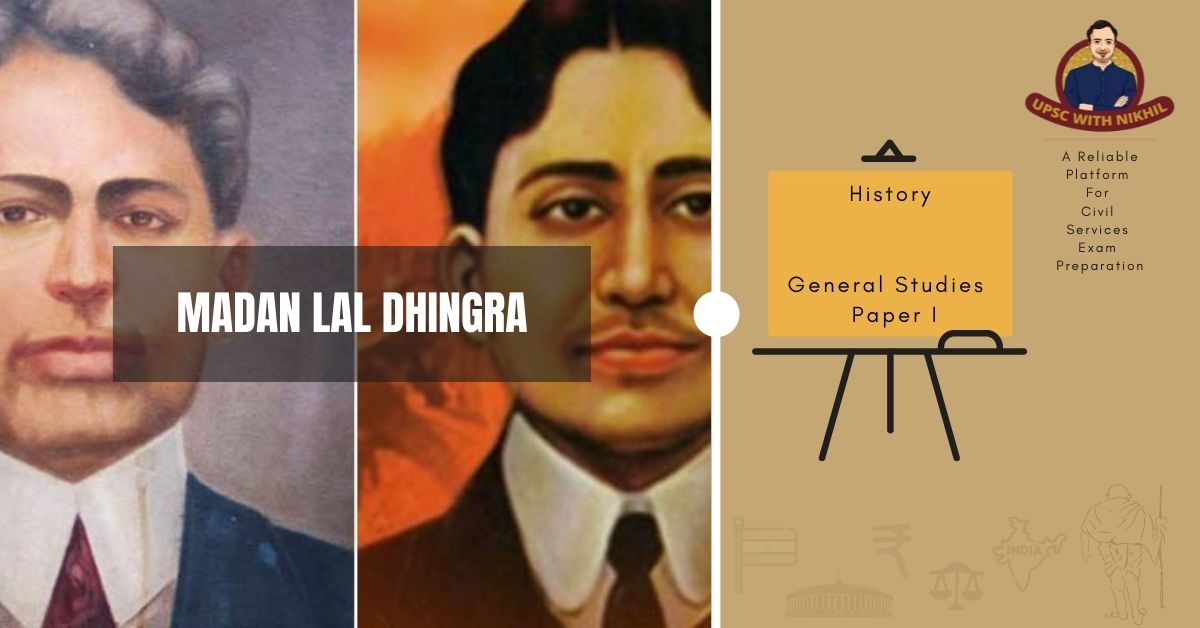Madan Lal Dhingra
Madan Lal Dhingra was one of the brave hearts of India. He was a part of Home Rule Society, India House and The Abhinav Bharat Society in London. His name has been recorded in the History for the assassination of Curzon Wyllie who was at that time adviser to the secretary of India. He was assassinated to avenge the exploitation and atrocities that British rule brought in India.
FACTS ABOUT HIS LIFE
Madan Lal Dhingra was born into a well-educated Hindu Punjabi Khatri family in Amritsar on 18th Feb 1883. His father worked for the government as a civil surgeon. He conducted extensive research into the causes of Indian poverty and famines, and concluded that the key issues in finding solutions to these issues were Swaraj (self-government) and Swadeshi.
Dhingra once led a student protest against the principal's decision to have the college blazer made of English-made cloth. For this, he was expelled from college. His father advised him to apologise to the college's administration. Dhingra refused, opting instead to take a job and live his life according to his own desires, rather than returning home to discuss the situation with his father. For a while, he worked as a clerk.
Dhingra arrived in London in 1905, a year after Shyamaji Krishnavarma founded India House. He met Savarkar and other activists while he was there.
THE ASSASSINATION OF SIR CURZON
On the evening of July 1, 1909, Madan Lal Dhingra attended the National Association's "At Home" function at the Imperial Institute. As Sir Curzon Wyllie, the Secretary of State for India's political aide-de-camp, was leaving with his wife, Dhingra fired five shots at him, four of which hit the target.

A Parsee doctor, Cawas Lalcaca, who attempted to intervene was also killed by Dhingra's sixth and seventh bullets, which killed Sir Curzon on the spot. Dhingra attempted but failed to commit suicide. He was detained right away. Dhingra's father was a close friend of Sir Curzon Wyllie, which caused him to distance himself from Madan Lal.
COURT’S VERDICT ON MADAN LAL
Madan Lal Dhingra was tried at the Old Bailey on July 23, 1909. During his trial, he represented himself and stated that he did not regret killing Curzon Wyllie.
In court, Dhingra stated that he did not regret killing Curzon Wyllie because he has done his service for his motherland. It was an act to avenge the inhumane British rule in India and as retaliation for the British government's inhumane killings of Indians.
On August 17, 1909, he was found guilty, sentenced to death, and executed at Pentonville Prison.
“Thank you, my Lord,” he said to the Chief Justice as he was being removed from the court. I don’t care. I am proud to have the honour of laying down my life for the cause of my motherland.”
Dhingra's body was denied Hindu rites after his execution and buried by British authorities.
The Viceroy of India apparently sent a telegram to the Secretary of State for India (on 3 August 1909) after he was sentenced to be hanged, saying, "Please do not send Dhingra's ashes to India."
We do know that Dhingra's body was buried within the prison walls rather than cremated. Due to his anti-British activities, his family had already disowned him.
In 1976, the coffin was exhumed (apparently by chance), flown to New Delhi, and then carried in a public procession to Amritsar, where he was cremated.
His ashes are laid to rest in one of the city's main squares, which is named after him in Akola, Maharashtra.


